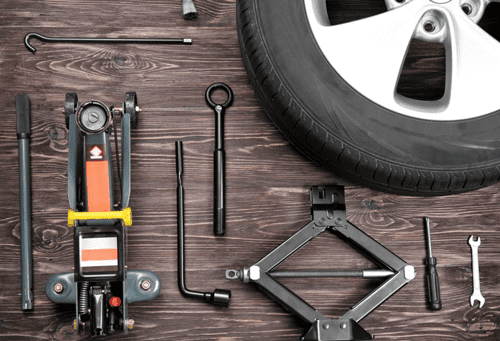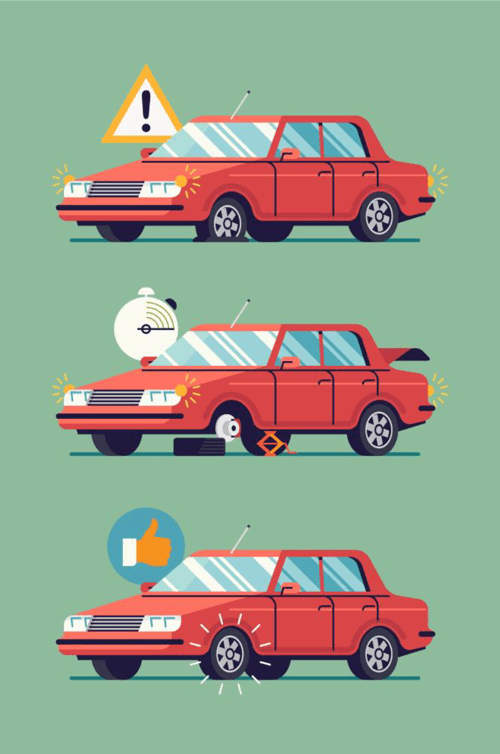- Need Any Help: +1 647-760-5505 or
- info@trubicars.ca

When you’re traveling on the road whether it be short or long distances, getting a flat tire is something that makes any driver a bit panicked. These things happen. It’s part of operating a motorized vehicle. Tires can go flat for a variety of reasons, something on the road could’ve punctured the tire, air can escape through the gaps between the tire and the rim as vehicle weight fluctuates through it, and cold weather can also decrease your air pressure. At Trubicars we have outlined what steps you can do to ensure you’re prepared when you experience a flat tire.

Certainly, you shouldn’t wait until your tire is flat to make sure you will be prepared. Always ensure that your vehicle has a spare tire. Most vehicles also include the necessary tools you will need in order to change the tire. If not, you will need a lug wrench, a jack, and wheel wedges. If your vehicle is equipped with the necessities, it can oftentimes be located at the back of the vehicle or under the floor.
To prevent getting a flat tire, be sure to check your tire pressure frequently and check your tires for any potential damages.

When it comes to changing your flat, here are the steps you should follow:

Now that you have successfully changed your flat tire, it’s important to remember that your spare is not your permanent tire. Spare tires are typically smaller than regular ones and should only be used in an emergency when your regular tire becomes flat. You should have your regular tire fixed or replaced as soon as possible. Take your flat tire to a tire shop for them to repair it or to purchase a replacement.
At Trubicars we emphasize to our students that driving is a big responsibility, and it is your duty as an operator of a motorized vehicle to ensure that you remain safe and responsible behind the wheel, not just for your sake, but for the sake of others. If you are looking for more information on the dangers of drowsy driving, check out the Trubicars website!

 March 9, 2025 by
March 9, 2025 by Trubicars
Trubicars
 January 16, 2025 by
January 16, 2025 by Trubicars
Trubicars
 January 16, 2025 by
January 16, 2025 by Trubicars
Trubicars
Once you acquire the knowledge provided in
those tests, you are ready to pass the test,
for the first time.
